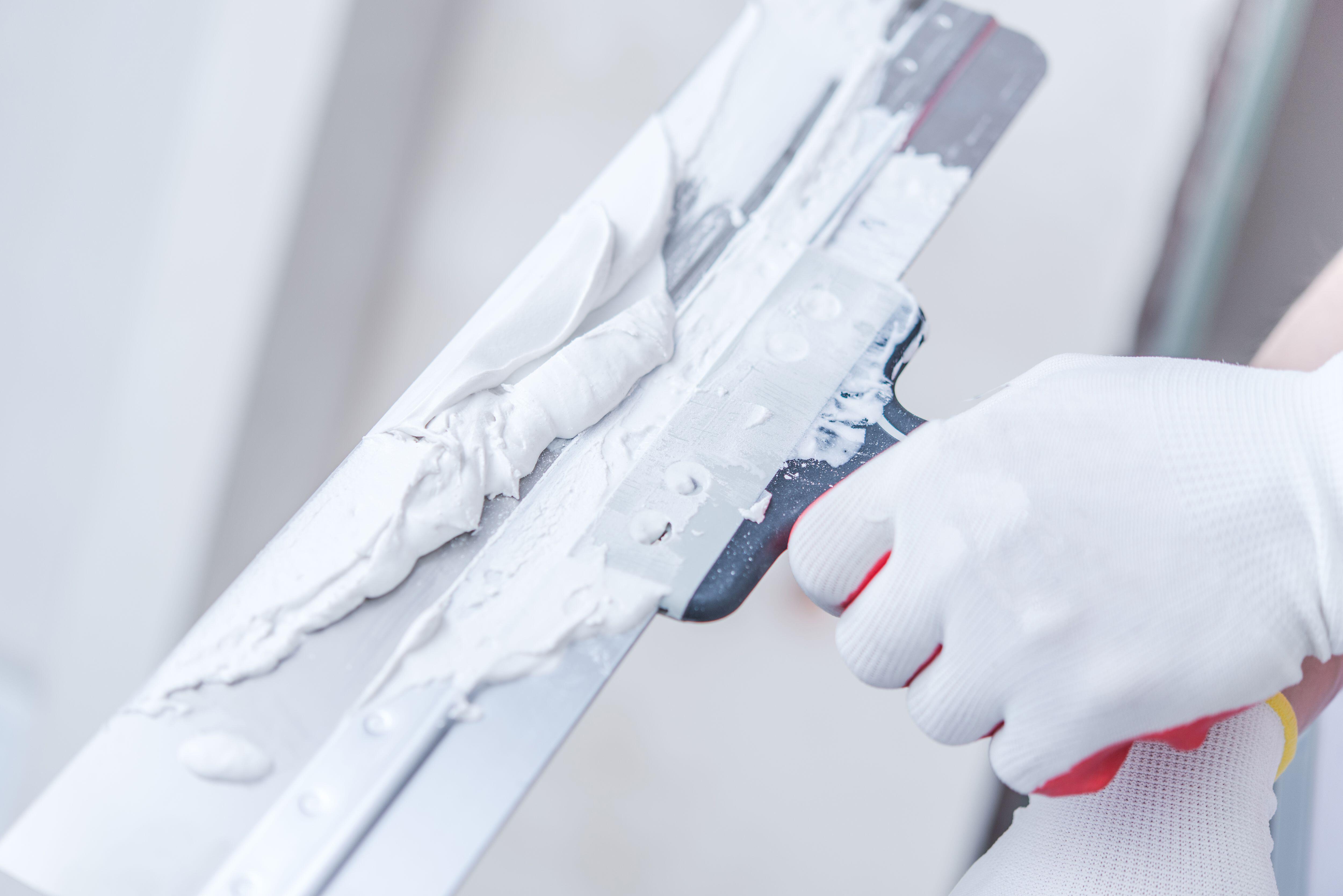How to patch a drywall ceiling – an easy guide for DIYers
These expert tips on how to patch a drywall ceiling will save you thousands in repair costs...

Learning how to patch a drywall ceiling is a handy piece of knowledge that can save you thousands of pounds in repair costs over a lifetime.
Your drywall ceiling may get damaged through ceiling leaks or wear and tear, and it's a relatively easy fix for a seasoned DIYer.
If you can learn how to hang drywall ceiling or have accomplished removing a popcorn ceiling, you can certainly turn your talents to patching a drywall ceiling. We asked Nick Cryer, founder of high-end residential construction company Berkeley Place, to share his top tips for patching a drywall ceiling below.
How to patch a drywall ceiling for a pro-worthy finish
A drywall ceiling might need patching after fixing a ceiling leak as part of repairing a ceiling with water damage. These top tips will ensure you’re prepared to take on those repairs yourself for a fresh new ceiling that’s as good as new. Before diving in, consider tips from our pros on the mistakes to avoid when hanging dry wall.
For this project, you will need:
- Drywall saw
- Joint compound
- Battery or electric screwdriver
- Putty knife
- Framing square
- Ruler or tape measure
- Sandpaper
- Drywall primer
1. Cut a new section of drywall
Try cutting an ‘inspection hole’ before removing the damaged section of drywall. If you cut the hole and see electrical wires, plumbing, or gas lines you may need to hire a professional to replace your ceiling.
Otherwise, draw a box around your damaged area with a framing square, then cut this size out of the existing drywall around the hole.
‘Measure the thickness of the drywall (most likely 12mm), and cut a new replacement section to size to cover the hole or damaged area you want to patch,’ says Nick.
You can use a tape measure or ruler to measure the cutout section to get the exact dimensions for the new piece.
Place two slabs of wood inside the hole to support the new section and screw in. Then screw the new section of drywall into place.
2. Apply drywall compound and tape
Taping the edges of the new patch of drywall to make it invisible is the trickiest part of the 'how to patch drywall ceiling' job, according to Nick.
He says: ‘You will need drywall compound and a roll of paper tape. You can use mesh tape, but it isn’t as strong. You can also create a perfect corner and crisp edge with paper tape that mesh cannot equal.’
He adds: ‘Drywall compound hardens quickly and doesn’t shrink, so it’s ideal for filling cracks, gaps and joints before applying the joint tape.’
Apply a layer of drywall compound over the new patch and then press your paper tape over the seams, running over it with your putty knife to smooth.
Then cover the whole patched area and paper tape with a layer of drywall compound to hide the tape and seams.
You will want to apply up to three coats, and it’s a good idea to sand the area between each coat to make sure it's smooth and doesn't have any 'high spots'.
Using a large 12in putty knife makes the job easier.
3. Sand and clean
After the third coat of compound, sand the area until super-smooth and then clean with a damp cloth to remove dust.
4. Apply your primer
You will then need to prime the ceiling with a drywall primer and paint the patch to match the rest of the ceiling for a seamless finish. Your drywall ceiling patch repair is complete.
Can you patch plaster ceiling with drywall?
Yes, you can patch a plaster ceiling with drywall. Cut out the damaged area of plaster, then use drywall to patch it, securing it in place with drywall screws.
Sign up to the Homes & Gardens newsletter
Design expertise in your inbox – from inspiring decorating ideas and beautiful celebrity homes to practical gardening advice and shopping round-ups.
Ruth Doherty is an experienced digital writer and editor specializing in interiors, travel and lifestyle. With 20 years of writing for national sites under her belt, she’s worked for the likes of Livingetc.com, Standard, Ideal Home, Stylist and Marie Claire as well as Homes & Gardens.
-
 Orange and green is the bold color pairing quietly transforming homes in 2025 – here's 4 reasons why
Orange and green is the bold color pairing quietly transforming homes in 2025 – here's 4 reasons whyInterior designers are making the orange and green combination work wonders – this is how you can too
By Sophia Pouget de St Victor Published
-
 This Michelle-Pfeiffer-approved chair is made of a forebodingly unusual material, opening the debate: Is it a rustic stunner, or a danger to sitters?
This Michelle-Pfeiffer-approved chair is made of a forebodingly unusual material, opening the debate: Is it a rustic stunner, or a danger to sitters?The actress took to Instagram with a chair made of a controversially sharp material – and fans are unsure of how they feel about it
By Sophie Edwards Published
-
 7 dorm room organizing rules for less clutter and more space
7 dorm room organizing rules for less clutter and more spaceExperts offer their top tips for creating a well-organized dorm room, no matter the size, space, or layout.
By Ashley Chalmers Published
-
 How to maximize storage in a small or shared dorm room, according to pro organizers
How to maximize storage in a small or shared dorm room, according to pro organizersFind out all the hidden storage zones you might never have noticed
By Ashley Chalmers Published